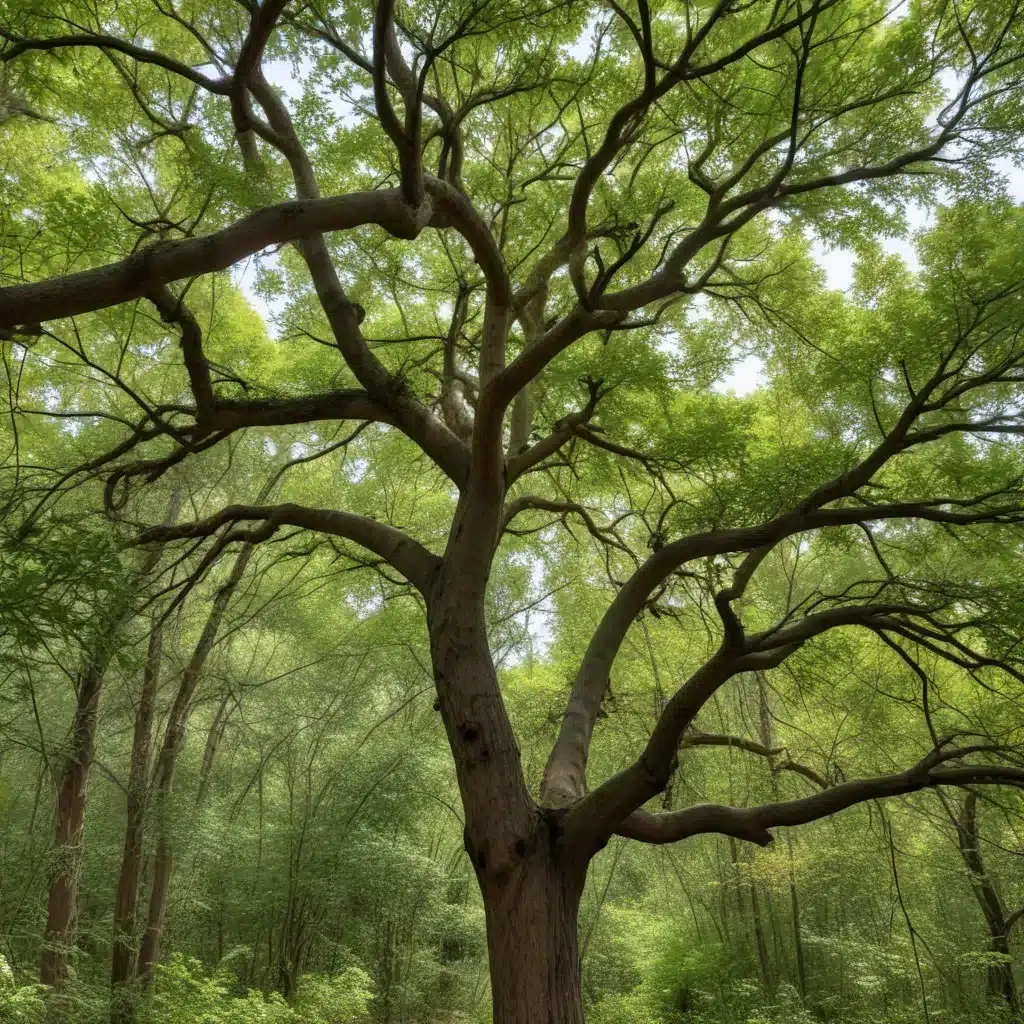
Unveiling the Power of Native Trees
As a seasoned tree care specialist here in Palm Beach County, I’ve had the privilege of witnessing firsthand the remarkable impact that native tree species can have on our local ecosystems. Too often, we underestimate the vital role these trees play in sustaining biodiversity and creating vibrant, thriving habitats for a myriad of creatures. But in my experience, harnessing the power of native trees is the key to unlocking a thriving, interconnected landscape that benefits both humans and wildlife alike.
Let me share with you a few of the captivating insights I’ve gleaned from my years in the field. One of the most remarkable things about native trees is their ability to support a diverse array of insects, birds, and other small creatures. Take oaks, for example – a single oak tree can host over 500 different species of butterflies and moths! That’s an astounding statistic when you consider the broader implications for the food web. Those caterpillars, in turn, become a vital food source for songbirds, who rely on them to nourish their young. It’s a delicate balance, but one that native trees are uniquely positioned to maintain.
The Importance of Native Plantings
And it’s not just about the insects and birds – native trees also provide essential resources for larger mammals like deer, squirrels, and even bears. The acorns, nuts, and berries that these trees produce are a crucial component of the local food chain, sustaining wildlife populations throughout the year. By incorporating native trees into our landscapes, we’re not just beautifying our surroundings – we’re cultivating a thriving ecosystem that supports the full spectrum of life.
But the benefits of native trees extend beyond their ecological impact. These hardy, adaptable species are often better equipped to withstand the challenges posed by Florida’s capricious weather patterns. I can’t tell you how many times I’ve seen non-native ornamentals succumb to the stresses of severe storms, high winds, and extended droughts. Native trees, on the other hand, have evolved to thrive in these conditions, making them a much more resilient and sustainable choice for property owners.
Storm-Proofing with Native Species
And speaking of storms, one of the most critical aspects of tree care in our region is ensuring that our landscapes are prepared to weather the inevitable hurricanes and tropical systems that sweep through. I’ve seen firsthand the devastation that can occur when trees are not properly maintained or selected for their storm-resistance. That’s why I always encourage my clients to prioritize native species when it comes to tree planting and landscaping.
Take the live oak, for example – a true icon of the South and a tree that has perfected the art of weathering intense winds and heavy rains. With its sprawling, low-hanging branches and deep, extensive root system, the live oak is practically built to withstand the fury of a hurricane. And let’s not forget the resilient beauty of the palm tree, another native species that has adapted remarkably well to our coastal climate.
Nurturing Biodiversity through Landscaping
But native trees offer so much more than just storm-resistance. They’re also invaluable in the realm of landscaping, providing year-round visual interest and creating a sense of place that simply can’t be replicated with non-native ornamentals. Think of the vibrant fall foliage of the red maple, the delicate blooms of the serviceberry, or the stately presence of the bald cypress. These trees don’t just enhance our surroundings – they connect us to the unique character of our region and the rich tapestry of life that thrives within it.
And that’s why I’m such a passionate advocate for the use of native trees in residential and commercial landscapes. By prioritizing these species, we’re not just beautifying our properties – we’re actively contributing to the preservation and restoration of our local ecosystems. We’re creating habitats that support pollinators, provide food and shelter for wildlife, and ultimately, enhance the overall health and resilience of our community.
Transforming Landscapes, Empowering Biodiversity
It’s a lesson I’ve learned time and time again in my work as a tree care specialist. When we embrace the power of native trees, we’re not just tending to the needs of our own landscapes – we’re playing a vital role in nurturing the delicate balance of life that sustains us all. And the rewards of this approach are tangible, from the vibrant songbirds that flit through our branches to the healthy, thriving trees that grace our properties.
So, I encourage you, whether you’re a homeowner, a commercial property manager, or simply someone who cares deeply about the natural world, to consider the immense value of native trees. Seek out species that are well-suited to our local climate and soil conditions, and incorporate them into your landscaping plans. Trust me, the benefits will be far-reaching, from the improved storm-resilience of your property to the renewed sense of connection to the rich biodiversity that makes our region so truly special.
Fostering a Brighter Future with Native Trees
After all, in a world that is increasingly disconnected from the natural rhythms of the land, the power of native trees to bridge that divide is truly remarkable. By nurturing these living, breathing reminders of our shared heritage, we’re not just beautifying our surroundings – we’re cultivating a future that is richer, more resilient, and more in harmony with the very ecosystems that sustain us.
And that’s a future I’m proud to be a part of, both as a tree care specialist and as a steward of the natural world. So, let’s roll up our sleeves and get to work, planting the seeds of a more vibrant, biodiverse tomorrow. The rewards, I can assure you, will be well worth the effort.


